|
Getting your Trinity Audio player ready...
|
The slow and painful death of Hand-writing.
It was a particularly busy day at work. I was moving between patients quickly making sure that I was not appearing rushed and was trying to give each patient the time and attention that they deserved. The email inbox was overflowing and the phone calls were relentlessly interrupting. The secretary reluctantly walked into my office perhaps worrying that I might snap at her if she piled up another task on my desk. She waited until I got off the phone and said, “Here are some disability forms. I have already filled them out. You just need to sign and date at the bottom.” That was easy enough for me so a brief sense of relief came over me reflected by my facial expressions. The next moment something happened that felt like my life had changed in a way that I had never expected it to be. My hands went to the front pocket of my shirt and then to the inside pocket of my jacket and I could not find a pen. I quickly turned to the corner of my desk where all the stationery was supposed to be and I realized that there was no pen there either. A strange sense of sadness and embarrassment overcame me for the fact that I was neck-deep in the middle of a busy workday and I did not have a pen. A similar feeling that a warrior would have thousands of years ago stranded in the middle of a battleground and not being able to find his sword. I asked the secretary if she had a pen and she rushed to her desk and brought me a Ball Pen with which I signed the document and moved on to dictate my next patient note. For many, this may not be a big deal at all but for me, this moment represented the end of an era in human history.
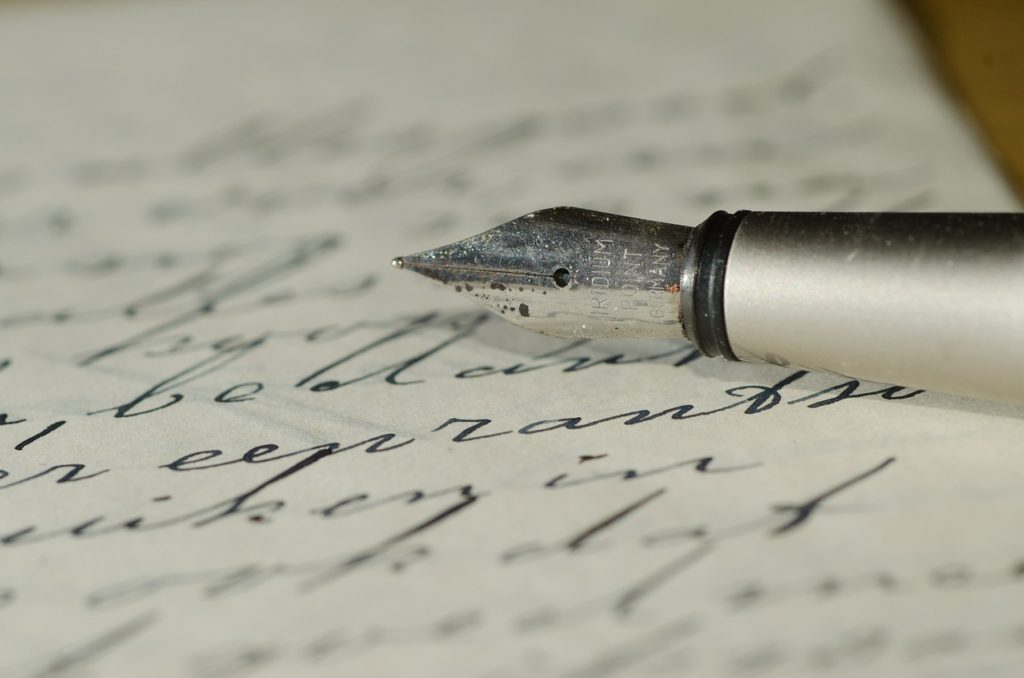
My memory goes back to kindergarten when my parents brought me a four-lined notebook which helped to learn how to write. In Elementary (Junior) school, we were only allowed to write with a pencil. I don’t know the exact reason behind not allowing elementary school children to use a pen. Maybe it was because they did not want little children to make a mess with the ink pens. Perhaps somebody decided that using a pencil might be better when it comes to developing the handwriting skills of a child. Whatever the reason was, it turned out to be one of the biggest excitements as a child to graduate to Middle (Senior) school where for the first time we were allowed to use ink pens. There was another rule here though. Only Fountain Pens were allowed and Ball Pens could not be used. I again do not understand the reason behind this rule but we always thought that this would be better for the development of hand-writing. Some kids started using the Ball Pen instead of the Fountain Pen towards the later years of High school and they were not restricted by the teachers to do so but some of us continued to use the Fountain Pens since we had gotten so much used to it. Also, it had been built up in our psyche that any official hand-writing should be done with the Fountain Pen. Just like you would always wear a tie and a jacket instead of jeans and a t-shirt to a job interview, you would also write an official letter with a Fountain Pen in blue or black ink instead of writing with a Ball Pen in any other color.
My generation, which is people born in the latter part of the twentieth century has witnessed the transformation of the world within our lifetime perhaps as no other generation has seen in the past. It feels that the progress made in the digitalization of the world over the last few decades would otherwise have been expected to take place over centuries. We went from having one rotary-dial phone in the whole house to a smartphone carried by every member of the family. We went from finding our way using cumbersome road maps and stopping at each gas station to ask for directions to following satellite-controlled navigation systems giving us accurate directions and even the estimated time of arrival at a certain destination. When we were kids, our uncle used to live overseas and I can remember it being a big family event for him to call us. He would place a three-minute call through an operator which probably cost him a fortune and only my grandparents were allowed to talk to him due to the limited time that they had. We would all still gather around the phone and enjoy the call by listening to our side of the conversation. Now every morning, on my way to work, I press one button on my phone and I am not only able to talk but also to have a video chat with my mom and my brothers at the same time while we all live in different parts of the world in different time zones.
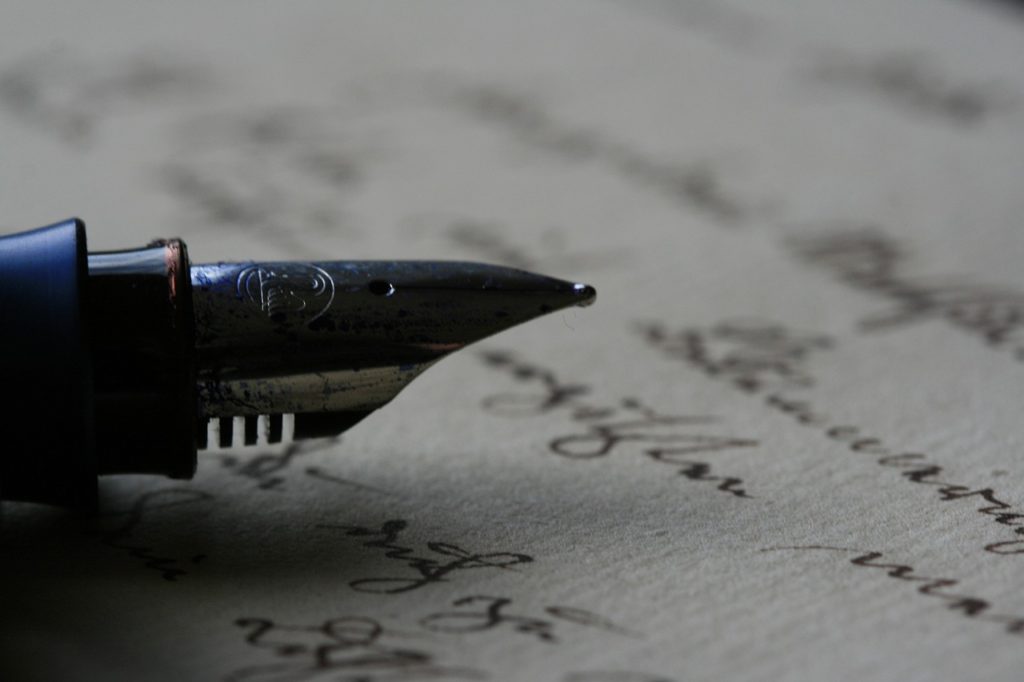
A child today learns to use the keyboard before he/she learns how to hold a pencil. That was not the case just a decade earlier. When we were kids, nobody knew or was expected to know how to use a keyboard. You only needed to learn how to type if you wanted to become a stenographer or an office secretary. When we were kids, we used to love going to our father’s office during summer break and just hang out in his office while he was out doing his work. We loved to explore his drawers and use his office stationery to write with. We loved sitting at his official desk and chair and having access to some refreshments in the fridge. There was an extra Type-Writer in his office that was not being used much and I had asked his secretary to give me a few typing lessons and that is where he showed me which fingers to use for certain alphabets on the keyboard. It was much harder to type on a Type-Writer than typing on a computer keyboard since those keys were weighted and much harder to press, especially the alphabets that have to be typed with the ring and little fingers. This is a similar difference when you play the weighted keys of a piano versus a digital keyboard. My brothers were spending all their time playing endless hours of video games on Atari and Nintendo while I was learning to type on a Type-Writer. They made fun of me and thought that I was being a nerd and wasting my time and I thought the same about them. It turned out that hand-writing would be largely replaced by typing no matter what kind of work you do.
It is nice to think of people as parts of certain arbitrarily defined generations when it comes to discussing topics like this. The baby boomers are people who were born in the 1940s to 1960s. Then came the generations X, Y, and Z. Generation X, to which I belong, comprises the people who were born between the 1960s to 1980. Next in line is generation Y also known as the “Millennials” who are people born between 1980 and 1995. Latest is the Generation Z that is the kids born after the year 1995. I have noticed that most Millennials may never even have used a Fountain Pen and they do not understand its different parts and how to hold it or write with it.
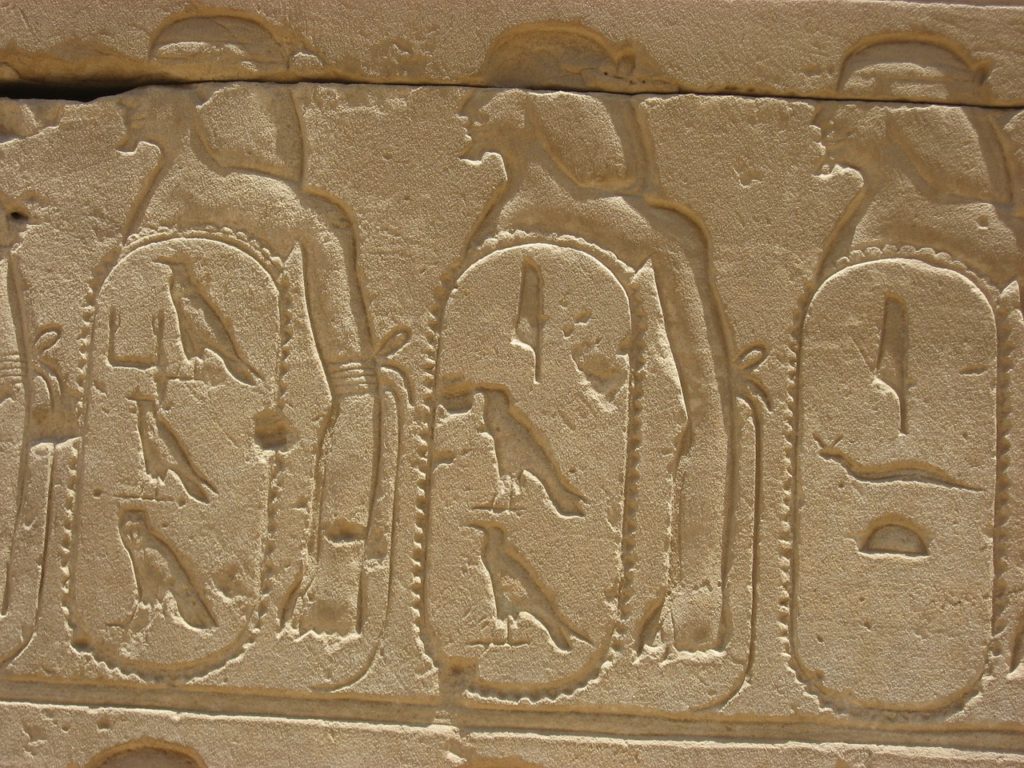
Humans have probably been writing ever since Homo sapien cognition developed. Maybe when writing on the walls of the caves, man used sharp objects or natural materials to etch or engrave on stone. Then came the use of papyrus and other natural materials such as bamboo or animal hides to write on. The first use of paper has been described in China as early as a few hundred years BC. For centuries, the pens that were used to write would not carry any ink but rather had to be dipped in little ink-pots. This was messy with ink stains on hands and paper and also cumbersome with having to dip the nib in the inkpot repeatedly, breaking the natural flow of hand-writing. The first mention of a Fountain Pen documented in history is from 974 AD when an Egyptian King desired for a pen to be made that would carry the ink in it rather than having to repeatedly dip it into the inkpot.
Later in history, there is mention of the Fountain Pen during the 15th and 16th century Renaissance period in Europe. The hand-writing of Leonardo Da Vinci has been analyzed and experts have concluded that some of these may have been written with Fountain Pens. By the mid-19th century, different pen designers started obtaining patents for their Fountain Pens and some of the noteworthy names were those of John Scheffer and John Jacob Parker. These pens now contained a reservoir in which one could draw a reasonable amount of ink and keep writing for several pages without having to refill. The ink would pass from the reservoir to the nib using the principles of gravity and capillary action. It wasn’t until the early twentieth century when the “Ball Pen” was invented. These pens were further improvised in a way that instead of a nib, there was a tiny ball made of metal such as brass, steel, or tungsten. The ink was also improvised in a way that it was more viscous and less likely to smudge on the paper and would dry quickly. This ink could be carried in the reservoir and could be used for a significantly longer time to a point that the modern Ball Pen can write for thousands of pages without needing to refill the ink. With the mass production of these Ball Pens also came affordability and these pens could be made at such a low cost that one could easily use a pen and throw it away once the ink was finished.
When I was in Middle school in the 1980s, we would buy very affordable Fountain Pens at our school bookstore. These came with reservoirs which we would fill with ink that was sold in small bottles. We would have to refill the ink once every few hours or a couple of days depending on how much we wrote. Later, pre-filled ink cartridges became available but these were not the most cost-effective since they were more expensive and had to be thrown away after each use. One ink bottle could perform the job of hundreds of pre-filled cartridges. Some kids still liked to use the pre-filled cartridges but once they ran out, instead of throwing them away they would use a medical syringe to inject ink back into the cartridges to re-use them which of course was not a very practical solution and one was better off just buying ink-bottles.
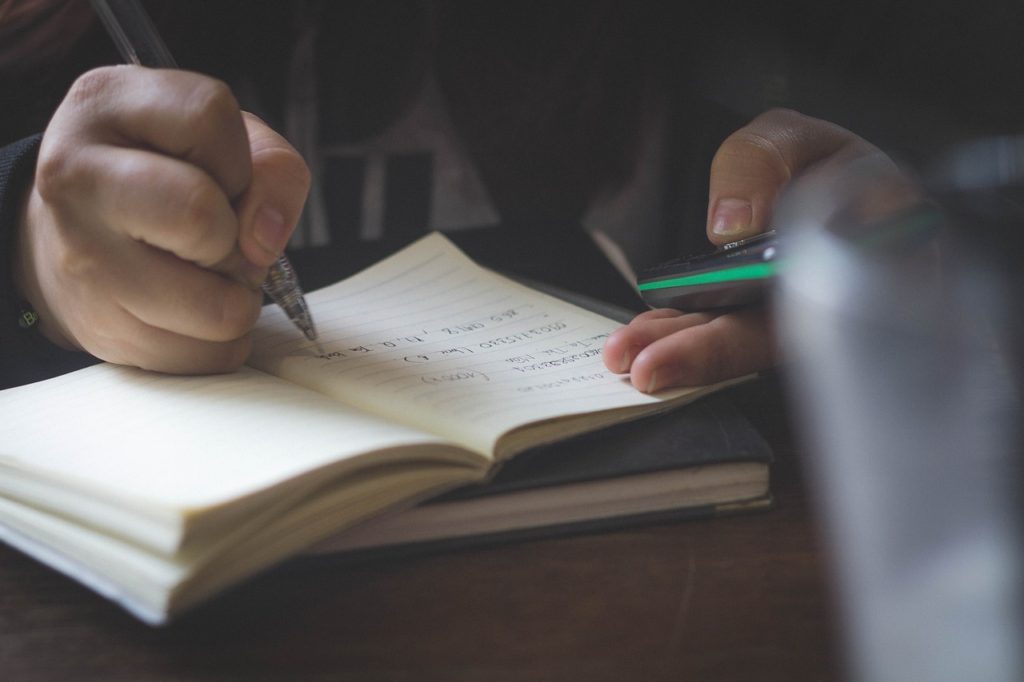
Our school mandated that we use blue ink. Later in high school, they allowed the use of black ink as well but many kids just continued to use the blue ink. Red ink was supposed to be used only by the teachers to mark our work and to make corrections and award grades. Our exams at that time did not have the “multiple-choice questions” but rather we had to write essays and paragraphs as answers to all questions. The year-end exams were typically over three hours for each subject of study. We were given blank papers as answer sheets which usually had about 12 or 16 sheets of paper. Although the teachers told us that the quality of our answers mattered rather than the quantity, it was an unspoken rule that the more you wrote, the better grade you would get. That would make one ask for additional sheets of paper if you had already used up the provided answer sheets. This would even end up in being a competitive scenario when hardly 30 minutes into a 3-hour exam, the first student who would raise a hand for an extra sheet of paper would look around the classroom with a conquering expression on his or her face. Some of the best students would end up asking for a number of additional sheets that were even higher than the original answer sheet provided. Finally, small pieces of thread were distributed which were used to tie all the sheets together. This had to be done as neatly as possible. Teachers were more likely to give extra reward to the more voluminous answer sheets.
Another trick I used was to write the essays in black ink instead of blue ink and to write the headings in blue ink. This would make my answer sheet stand out among others which was another way to convey to the teachers that my work was different and I was looking for a better grade not only with the use of content but also additional credit for presentation. It turned out that this strategy applies to everything in life. No matter what job you do, there is one thing to be knowledgeable and competent at what you do but what makes you stand out among your peers is how you present and deliver your work.
Handwriting and the use of Fountain Pens also became part of our identity and childhood memories. You would always recognize the hand-writing of a classmate just like you would recognize their voice, laugh, or any other personal attribute. If you were to find a piece of paper or notebook that did not have any name written on it, you would easily guess who it belonged to by recognizing the handwriting or you just had to ask around. One would also know who had good handwriting and who wrote illegibly. Some kids had such nice and neat handwriting that their notebooks would circulate in the whole class if any passages needed to be copied. One of the best comments was given by a teacher to my older brother when she said in front of the whole class that his handwriting reminded her of “pearls beautifully arranged on a necklace.” The neat kids would keep their ink bottles very clean and secure and also kept a small piece of tissue paper nicely tucked inside the box to quickly wipe away any smudges and spills. On the other hand, it was not unusual to see blue stains on the white shirts of the clumsy kids who could not handle the pens and the ink bottles very well. You were never supposed to lend your favorite Fountain Pen to somebody else if they asked for it because with months and sometimes years of writing, the nib would adapt to the slight pressure and slant of your handwriting and if somebody else wrote with it, they could ruin the subtle fineness of the nib.
The graduation day from high school used to be a big event. There were so many different ways to celebrate it. Some of those ways were unfortunately not very civil. Some kids would fill up their Fountain Pens with ink and then flick them towards other kids which would result in ink splashing on their clothes leaving stains. This practice was of course highly discouraged by the teachers but still, things would go out of hand on the last day of school. One of my best friends and I were once caught splashing ink on each other, which as you can imagine was not difficult to be caught when your crisp white school shirt had multiple ink stains on it. We were taken to the Principal and were given the worst imaginable punishment. Our shirts were taken away and we were made to stand shirtless in front of the whole school in a prominent location. This was an age when one is constantly trying to seek the opposite gender’s attention and attraction and when you have to stand shirtless with an unappealing skinny physique in front of the whole school, the incident ends up being high up on the list of the most embarrassing moments of our lives. We have a good laugh about it now but would not wish something like that to happen even upon our worst enemies.
During medical school our exams were similarly conducted as they did in high school, that is, we had to write essays in answer sheets. The same habits of handwriting that we had learned in school were used at this time without giving it too much thought. Many students had started using Ball Pens instead of Fountain Pens due to the ease of use and low cost and maintenance. After medical school, I started taking international exams to be licensed to train in the United States. This was the first time that I took exams on a computer by clicking on the answers to multiple-choice questions and without having to write anything on paper. Later when I started working as a physician, hand-writing was still the way of documentation until the advent of the Electronic Health Record. If you find any medical literature from a few decades or centuries ago, you will find that these patient notes were written in a very personable manner. The doctors would describe the patients and their ailments using a literary style and using human attributes of sympathy, empathy, intrigue, and even humor. Later with the increase of litigation and lack of time, the medical progress notes became more objective and “mechanical” which lacked documentation of the treating physician’s personal feelings and focused more on creating a document that could be used as a legal record and not to put anything in there that could be used against the writer should the matter be taken up in the court of law.

The earliest electronic health record came in the 1960s but it was not widely available or adaptable. The United States government started using an early form of electronic health record at the Veteran’s Affairs health facilities. In the 1990s, the internet gained widespread acceptance with electronic health records becoming more mainstream. However, it was later in 2009 when laws were passed to transition the whole country’s health care system to electronic records. Using this legislation, doctors and hospitals were given higher payments if they transitioned to electronic health records. However, this left them with no choice but to make the transition because if they preferred to use their old method of hand-writing the medical records, they were indirectly penalized by lower reimbursements. For doctors who were in practice for decades, it was a very big undertaking and they were faced with a choice of either retiring early or unwillingly and begrudgingly transition to the electronic method of keeping the health record.
There is no doubt that the electronic health record has significantly improved the ease of documentation and writing orders and the availability of such records at the palm of both doctors’ and patients’ hands. When I am on call, I can review a patient’s chart from my smartphone and even place orders without getting out of my bed. The patients receive their test results instantly and have direct access to their health records instantly from anywhere in the world. But it is not as straightforward as it seems. There are significant downsides to electronic health records as well. It still ends up being a lively debate whether the medical care that a patient receives has improved because of transitioning to the electronic health record or not.
Doctors are now spending most of their time having to document in the electronic record. This has taken away from the time that a doctor spends with the patient. The history taking and physical examination skills of physicians are becoming poorer. The sacred patient-doctor relationship is becoming weaker. I wouldn’t be surprised if, in the next couple of decades, doctors are just sitting at pharmacies or at their homes and evaluating patients just by being given data from the computers and giving advice in the same way never having laid a hand on a patient. The only time a doctor may have to physically see a patient would be if a hands-on procedure has to be performed such as surgery or endoscopy etc. At the end of the day, the patients will get the care that they need but we will not know health care as it has been known for centuries. The image of a doctor will be replaced from one of a caring and thoughtful individual sitting at the bedside, holding the hand of an ailing patient to a robotic human sitting endlessly in front of a computer screen. Even today, in the United States of America, doctors spend probably 90 percent of their time sitting in front of the computer screen rather than at the patient’s bedside. If anybody wants to challenge that statistic, you are welcome to come and spend a day at work with me.
During my late 20’s and 30’s, I was newly married and had young kids. I was also going through my residency training which had very long hours. I did not care much about what pen I would use to write with. Typically a lot of basic, pharmaceutical companies provided Ball Pens, were always lying around everywhere in the hospital. Then during my 40’s, I started to cherish the things that I used to like when I was younger. I rediscovered the music albums that I used to love during my teenage years. I watched again some of my favorite movies and read the books that I liked in my younger years. This is when I realized that I still liked to write with a Fountain Pen and I wanted to try it again. I went to Staples which is the largest stationery store in America. To my surprise, while they had hundreds of different types of Ball Pens, Gel-Ink Pens, and Markers available, they had only one or two types of Fountain Pens which came only with the pre-filled ink cartridges. I started asking around and researching the internet where I could find a larger variety of Fountain Pens. I could only find one or two stores in major cities such as New York or Washington DC that sold Fountain Pens. Somebody told me about a shop at a local mall where they had seen a few Fountain Pens. I went to the mall and when I approached that store, it turned out that it was a fancy jewelry and ornament store rather than a pen shop. When I asked the shopkeeper if they had any Fountain Pens, he directed me to a showcase in the store where I found a small collection of pens that were meant to be carried as decorative items rather than used mainly for writing. The cost of one of these pens was probably more than the amount needed to buy basic pens or pencils for an entire school. This is when I realized that Fountain Pens were no longer considered items of basic use but rather had become antique pieces of vanity. I took a look around the room and also realized that some other items had a similar fate such as wristwatches which were now being used only for presentation while everybody was dependent on their phones to tell the time.

Fortunately, in some other parts of the world, the Fountain Pens are still being used. I was able to purchase a few pens online that came with ink reservoirs called “converters” which were used to draw ink from a traditional ink bottle. I really enjoyed writing with a Fountain Pen again. There were days when the ink would smudge on my fingers but I actually liked that because it was reminiscent of my school years. I got several comments from people admiring my pens but I realized that in their minds I was using the pens for extravagance but I was quick to correct them that these pens cost me less than the cost of their lunch. A few times when somebody asked to borrow my pen, I reluctantly gave it to them worried that they would ruin the nib with their own slant of hand-writing but it was almost humorous to find out that most millennials did not even know how to hold a Fountain Pen and were not able to write with it properly without scratching the paper. This is when I started carrying a pen case with the capacity of two pens. I kept my Fountain Pen in one of the slots and carried a Ball Pen in the other just in case if anybody asked me to lend them a pen to write with.
Medicine is not the only profession that has moved away from hand-writing. If you look around, you will see omnipresent examples. You do not have to write many checks anymore because most of the banking and monetary transfers now take place electronically. Students have to hand-write less and less each day since most of their work is expected to be submitted online. Students even take notes on their tablets and laptops during class. Bookkeeping for many businesses is now done on electronic spreadsheets. Appointments for almost anything are made with online software such as at your hair salon, dentist, or car dealer. Your check at restaurants comes as a printed receipt rather than a handwritten one. A lot of times you are also tipping electronically. You do your taxes online now instead of filling paper forms and even vote electronically. It is said that a Judge when delivering a death sentence, would break the nib of the pen signifying the finality of the decision but in today’s world, where the death penalty is still given, perhaps this is also documented on a computer screen. The list of such examples is long and it goes on.
It is also interesting how our reflexes have changed. In the hand-writing days, the day would start by writing the date at the beginning of each piece of documentation. If somebody asked you what date it was, it would be at the tip of your tongue since you wrote it down numerous times that day. Now the computer auto-populates the date and if you are asked what date it is, you have to look at the computer screen or the phone screen to answer. Similarly, when somebody would ask what time it was, the reflex was to either look at the clock on the wall or glance at your wristwatch. Now your hand instantly goes towards your phone screen to know what time it is.
One of the most acclaimed novels of the twentieth century was “1984” by George Orwell. In this novel, written in 1949, the writer depicts a fictional dystopian world many aspects of which still resonate with the current times. There are many words used in the novel that have become part of the English literature such as “Big Brother,” “Thought police” and “Two Minutes Hate.” However there a couple of references to hand-writing that are not widely recognized which I will share with you here.
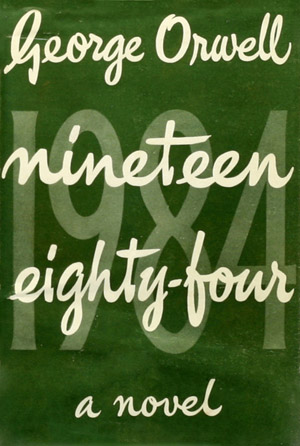
The protagonist Winston Smith uses a device at work into which he speaks and it automatically transcribes his words onto paper. He calls the device “Speak-write.” He calls a pen an “archaic instrument, seldom used even for signatures.” In 1949, this was pure imagination but in today’s world, on a daily basis, I dictate all my notes by speaking into a similar device that is connected to the electronic health record. Closed captioning or subtitles are available for any TV program now which is also now achieved by automatic transcription of the speech by software that is displayed as text at the bottom of the screen.
At another instance in the book, while disparaging another character called Parsons, as he writes in a notebook, he calls it “the neat handwriting of the illiterate.” I found it particularly interesting because as we know, doctors have been the target of hand-writing jokes of all time. Now that doctors are not writing as much anymore, these jokes are also fading away. I used to be annoyed quite a bit if a patient or a friend made an illegible handwriting joke with me since I always considered my own handwriting not to be as bad. I enjoyed this expression used by Orwell as a rebuttal to those jokes which implies that if your brain is functioning at a higher level, you don’t give as much attention to the clarity of the hand-writing but if the upper echelons of human intellect are lacking, all the remaining efforts of the brain are consumed at making the handwriting neat and legible!
In the end, I would very much like to request that this article not be taken as criticism of modern technology. One should always be open to innovation and embrace it readily while keeping an effort to revive tradition until innovation becomes the new tradition. For those who are skeptical that hand-writing will never become extinct, please realize the irony that I just wrote a hand-writing elegy without hand-writing it and you just finished reading a number of paragraphs typed with a keyboard on a computer screen.
This article was also published on Medium.com on February 18, 2021
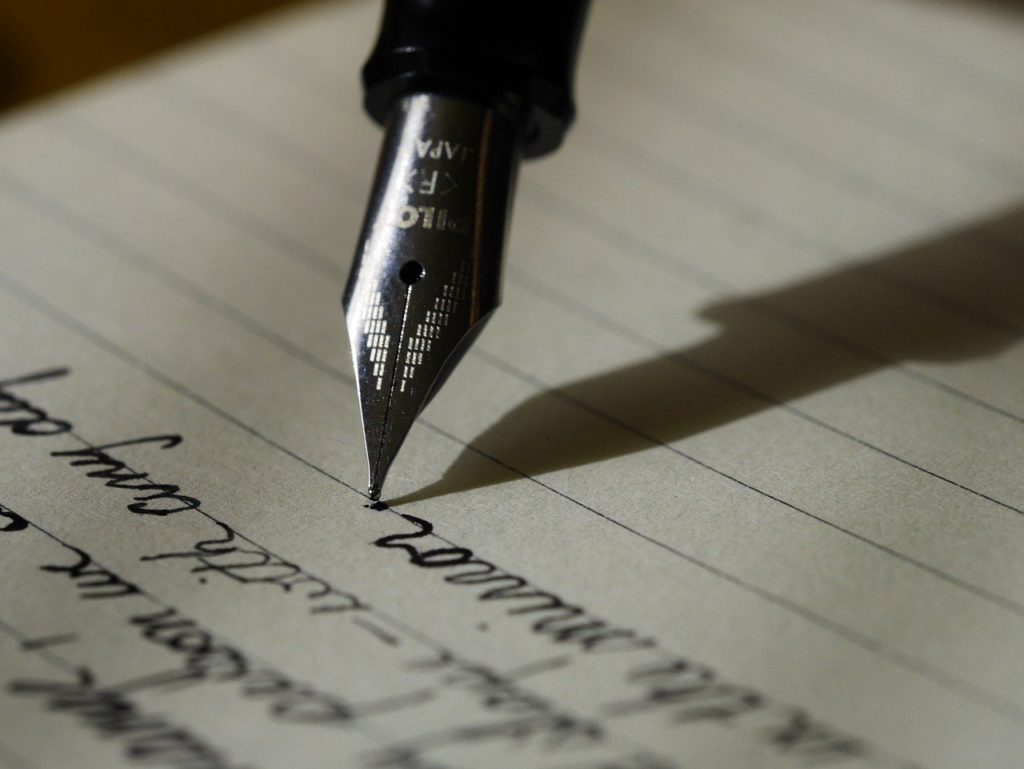

Its Awesome…i saw it in ashraf’s WhatAap status…love it😍
Thank you for reading Saqib.
As always, I love hearing/reading your thoughts Farhan. I hope you will keep writing..
Apeksha thank you for always reading and supporting. Hope you guys are well. Say hi to Raghav!
Good article. Loved the George Orwell references. 😁
Thank you Sir!
Wonderful. Great depiction.
A window that opens in the past.
There are many interesting moments that can be related to and discussed if we ever get a chance. But one question came up specially at the end part. It was nice ending but I believe you would have used the pen while writing ✍️ this beautiful piece. 😊
Thanks a lot for reading and sharing your thoughts Yasser.
Amazing article much appreciated but on a lighter note it would have been nice if written short so that most can read rather than skip it because of vastness and extensiveness but still good fir those who are readholic
Thank you dear Sajid for reading and commenting. I initially tried to cut down on the length of the article but then I was not able to convey all my thoughts and since this is a blog without any word limits, so I just left it as is but will definitely keep your suggestion in mind for the future.
Interesting 🤓